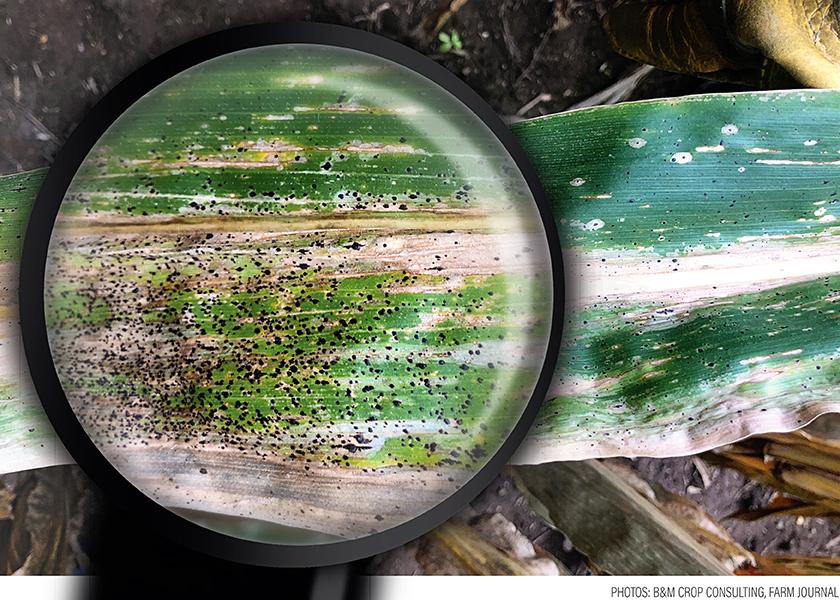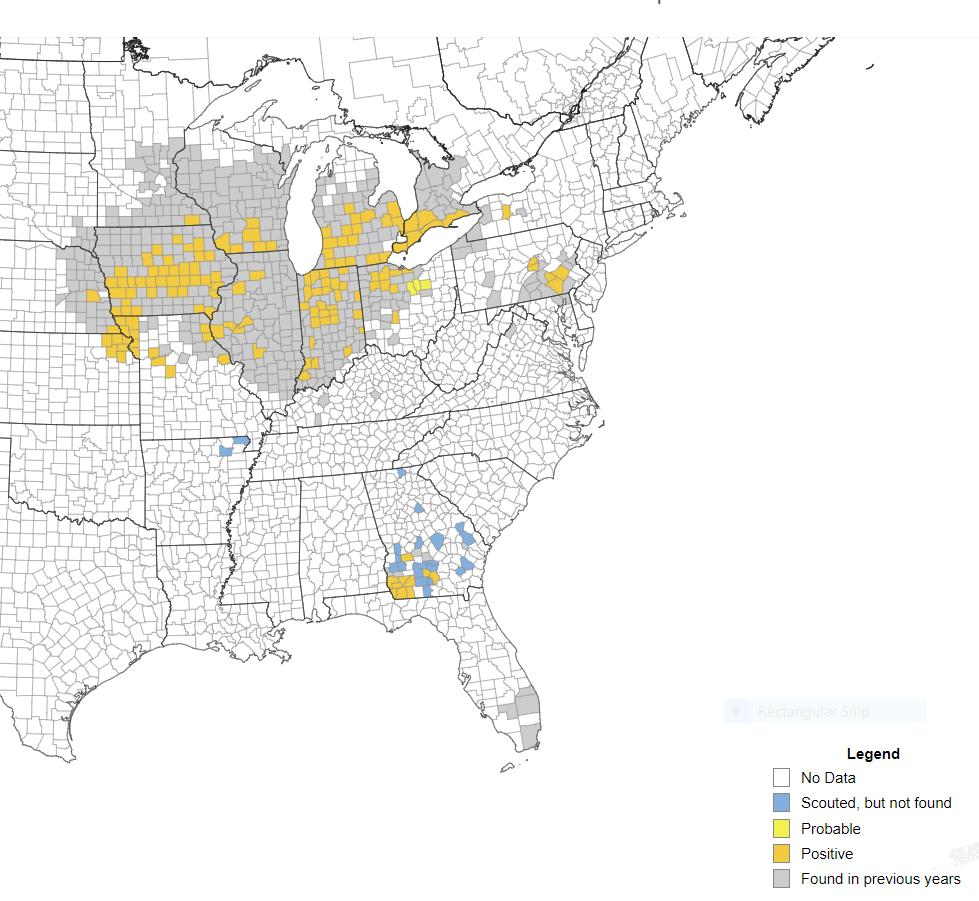Ugh. Tar Spot Moves In After Drought Leaves

Hot, dry conditions earlier this summer subdued tar spot development across much of the Corn Belt. Now, in mid-August, that’s no longer the case.
With recent, heavy rains, high dew points and multiple days of overcast skies, a result of smoke from the fires in Canada, tar spot has started to rebound and flourish in farm country.
“I looked at the ipmPIPE map last night, and it’s looking almost like the map did in 2021. It’s starting to explode,” says Phil Brunner, technical team agronomist for AgReliant Genetics, based in Westfield, Ind.

Corn ipmPIPE is a pest mapping and forecasting system developed by the National Institute for Food and Agriculture in partnership with land-grant universities. The tool shows where tar spot is being found on a county-by-county basis See the latest reports here.
Spray Proactively, Don’t Delay
Brunner is encouraging farmers who had the disease in 2021, and likely have the fungal spores present in fields, to make plans with their local retailer now to spray their corn before they see significant signs of the disease.
“I know a lot of farmers here have been proactive, which is a good thing,” he says. “Tar spot has that latency period of 30 to 45 days where the plants are infected, but you don't see any spots. It's just out there doing its thing – growing and growing. And then once it starts sporulating, it has like exponential growth. In 10 days it can take out a field.”
Brunner says many Indiana farmers have crops that are currently in the R3 to R4 stage now. “So, you’re past brown silk, and you’re in the milk stage or dough stage, (and it’s a good time to spray),” he says.
Additional Perspective
Iowa State University Extension agronomist Meaghan Anderson is also seeing more tar spot across Iowa fields now. She is advising farmers there to revisit their fields close to R6 (physiological maturity) to evaluate the ear leaf and upper canopy disease prevalence.
“This will provide you much better information as to how severe the tar spot was and whether it might've affected yield than waiting to see what it looks like at harvest time,” Anderson says in her online newsletter released earlier this week.
She adds that “data from multiple states in 2018 provided estimates of between 0.32 and 1.36 bushel-per-acre yield loss for every 1% increase in tar spot severity on the ear leaf at late R5 (dent) stage in corn.”
How Late Is Too Late?
Brunner says that at any time before black layer, tar spot can still do a lot of damage to a corn crop and a fungicide application could pay for itself.
Brunner relates an experience one seed customer had in 2021 where the farmer sprayed his corn for tar spot once early in the season, yet it returned. At this point, the crop was only two weeks out from black layer.
“He said, ‘I've already sprayed once, should I spray again? Am I going to make money on this application?’ He ended up going back on his own and spraying one strip of corn, and he saw a 12-bushel advantage in that strip compared to the rest of the field,” Brunner recalls.
For farmers conflicted about spraying for tar spot when the lesions are few, Brunner says to consider whether the added benefits can help pay for a fungicide application.
“Think about grain quality, stock integrity and harveststability. That's money in your pocket,” he says. “If you can drive another mile an hour faster at harvest, not having to scoop corn off the ground, things like that. Consider those added benefits other than just controlling tar spot.”
Consider These Additional Resources
Tar Spot Distribution map (https://corn.ipmpipe.org/tarspot/)
Tar Spotter App – https://ipcm.wisc.edu/apps/tarspotter/
Crop Protection Network – https://cropprotectionnetwork.org
High Humidity a Contributing Factor in Tar Spot Outbreaks







